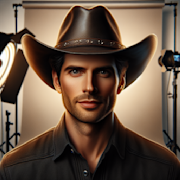The Magical Realism of Classic Fantasy Films

Introduction:
In the world of cinema, fantasy films have captivated audiences for decades. These timeless classics transport us to enchanting worlds where magic is real, mythical creatures roam, and the extraordinary becomes ordinary. One aspect that sets classic fantasy films apart is their ability to seamlessly blend reality with the supernatural, creating a genre known as magical realism. In this blog post, we will explore the mesmerizing allure of magical realism in classic fantasy films, delving into its characteristics, impact, and some notable examples.
Section 1: The Concept of Magical Realism
Magical realism is a literary technique that originated in Latin America but soon found its way into the realms of cinema. It combines elements of the fantastical with the ordinary, blurring the boundaries between reality and imagination. This unique blend allows filmmakers to bring magical elements into a familiar setting, creating a sense of wonder and surrealism. By infusing fantastical elements into everyday situations, magical realism provides a fresh perspective on reality, inviting audiences to suspend disbelief and embrace the extraordinary.
Section 2: The Charisma of Classic Fantasy Films
Classic fantasy films hold a special place in the hearts of moviegoers. They transport us into worlds brimming with mythical creatures, heroic quests, and epic battles between good and evil. What sets these films apart is their ability to infuse magical realism, captivating audiences of all ages. By intertwining magical elements within relatable contexts, classic fantasy films create a sense of believability that draws us into their enchanting narratives. From The Wizard of Oz to The Chronicles of Narnia, these films have shaped the genre, showcasing the boundless potential of magical realism within fantasy storytelling.
Section 3: Characteristics of Magical Realism in Fantasy Films
1. Blending of Realities
Magical realism in classic fantasy films often merges the ordinary reality we know with extraordinary elements. This fusion allows for the creation of a new universe deeply rooted in our imagination while still feeling tangibly real. Characters like Harry Potter and Frodo Baggins navigate a world where magic coexists with our ordinary lives, making the fantastical seem almost attainable.
2. Symbolic and Metaphorical Elements
Magical realism often employs symbolism and metaphors to convey deeper meanings and explore philosophical themes. The journey of a hero, the quest for self-discovery, or the battle between light and darkness are all common motifs in classic fantasy films. By using magical elements to represent these concepts, filmmakers can add layers of depth and resonance to their storytelling, making it resonate with audiences on a profound level.
3. Subtle Magic
Unlike high-fantasy genres that showcase grand displays of magic, magical realism tends to present magical elements subtly. These small, magical occurrences become part of the fabric of the world, seamlessly integrated into everyday life. Whether it’s the talking animals in Alice in Wonderland or the magical wardrobe in The Lion, the Witch, and the Wardrobe, these moments of subtle magic capture our imagination and transport us into a world where anything is possible.
Section 4: Impact of Magical Realism in Classic Fantasy Films
The incorporation of magical realism in classic fantasy films has had a significant impact on both filmmakers and audiences alike. By introducing fantastical elements into the real world, these films encourage viewers to question their own realities and embrace the power of imagination. Magical realism has also influenced the overall perception of the fantasy genre, expanding its reach beyond niche audiences and captivating mainstream viewers. The enduring popularity of classic fantasy films demonstrates the lasting impact of magical realism in the realm of cinema.
Section 5: Notable Examples of Classic Fantasy Films
The Wizard of Oz (1939): Featuring a young girl whisked away to a magical land, The Wizard of Oz beautifully embodies the concept of magical realism. From the Technicolor wonderland of Oz to the fantastical characters she encounters, Dorothy’s journey blurs the line between reality and fantasy.
The Lord of the Rings Trilogy (2001-2003): Peter Jackson’s adaptation of J.R.R. Tolkien’s beloved novels seamlessly blends magical elements with the epic quests of Frodo and his companions. The subtle presence of wizards, elves, and other mythical creatures brings Middle-earth to life in a captivating and believable way.
Spirited Away (2001): Directed by the acclaimed Hayao Miyazaki, Spirited Away is a Japanese animated film that expertly combines magical realism with coming-of-age themes. This enchanting tale takes viewers on a mesmerizing journey through a spirit world, blurring the boundary between reality and imagination.
Conclusion:
Classic fantasy films have forever imprinted the concept of magical realism onto the cinematic landscape. By intertwining fantastical elements within relatable contexts, these films invite audiences to suspend disbelief and immerse themselves in enchanting realms. Magical realism, with its seamless blend of the real and the extraordinary, has captivated generations of viewers, and its influence continues to shape the genre of fantasy storytelling in the cinema. So, grab a bucket of popcorn, sit back, and prepare to be transported to worlds where magic and reality coexist in perfect harmony.

Alberto Miller
Movie Fanatic
More From Classics Authority Movies

Movie
Cinematic Heists: Classic Movies that Mastered the Art of the Caper

Movie
Who's Afraid of Virginia Woolf? (1966)

Movie
Classic Mystery Movies: Unraveling Enigmatic Plots

Movie
Young Frankenstein (1974)

Movie
Celebrating the Legacy of Audrey Hepburn: Timeless Elegance

Movie
The Adventures of Robin Hood (1938)





